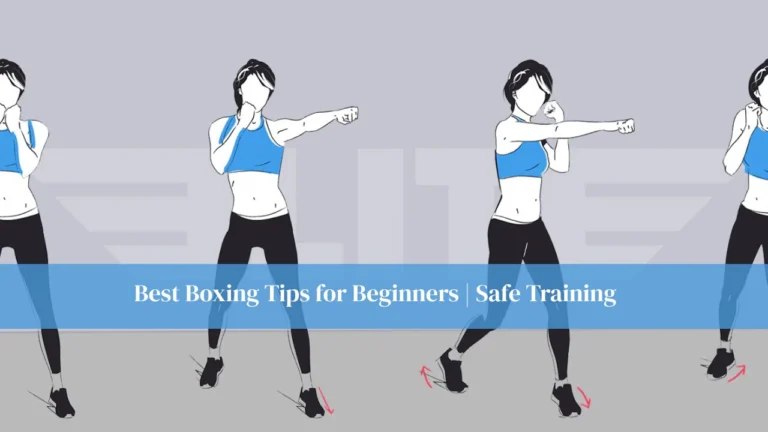In the dynamic world of combat sports, boxing is celebrated for its rigorous discipline and precise techniques. But what about jumping in boxing? Can you incorporate aerial maneuvers into the sweet science of pugilism? In this article, we’ll explore the intriguing question of whether jumping has a place in the boxing ring. We’ll delve into the benefits, drawbacks, and considerations that boxers need to keep in mind when contemplating jumping in their training and matches.
Can You Jump in Boxing
While traditional, acrobatic high jumps aren’t a staple in boxing, the sport does incorporate controlled movements like the jab step, skip step, and the occasional leap to enhance a boxer’s tactical arsenal. These unconventional techniques, although sparingly used, aim to create opportunities, disrupt an opponent’s rhythm, and maintain control of the fight.
The Mechanics of Jumping in Boxing
In the world of boxing, the mechanics of jumping play a fascinating role, bringing an element of surprise and strategic advantage to the ring. It’s not about high-flying acrobatics but rather controlled and calculated movements. Let’s explore the intricacies of jumping in boxing.
Understanding Footwork
At the heart of boxing lies the art of footwork. A boxer’s movement and positioning are pivotal, often determining the outcome of a match. However, when we introduce jumping, the importance of footwork takes on a new dimension.
Jumping, when executed effectively, can significantly impact your boxing strategy. It allows you to:
Gain Leverage
Jumping strategically can change your positioning, making it difficult for your opponent to predict your next move. It provides a unique opportunity to surprise your adversary and seize control of the fight.
Evade Punches
A well-timed jump can help you avoid oncoming punches. It takes you out of harm’s way, leaving your opponent swinging in the air. This not only prevents damage but also sets the stage for powerful counterattacks.
Create Openings
Strategic jumping can force your opponent to react, potentially leaving gaps in their defense. These openings can be exploited with precision punches, giving you an advantage in the match.
Types of Jumps
When it comes to incorporating jumping into your boxing repertoire, there are various techniques to consider. Each type of jump serves a different purpose, adding depth and strategy to your boxing game. Here are some key types of jumps to be aware of:
The Skip Step
This jump involves a subtle hop that shifts your weight and confuses your opponent. It’s an excellent technique for disrupting your adversary’s rhythm and creating openings for your attacks.
The Leap-In
The leap-in jump is a more aggressive move. With this technique, you jump toward your opponent while simultaneously launching a flurry of punches. It’s a bold approach that can catch your opponent off guard.
The Defensive Jump
This jump involves moving backward to evade an opponent’s attack. It’s a defensive maneuver, allowing you to escape from immediate danger and reset your position.
Pros and Cons of Jumping in Boxing
Jumping in boxing is a technique that can be a double-edged sword, offering both advantages and disadvantages. Here, we explore the pros and cons of incorporating jumping into your boxing strategy.
Pros
When it comes to incorporating jumping into your boxing strategy, several advantages can tip the scales in your favor.
Element of Surprise
One of the most significant pros of jumping in boxing is the element of surprise it brings to the ring. A well-timed jump can catch your opponent off guard, disrupting their rhythm and creating opportunities for you to launch unexpected attacks. By introducing an element of unpredictability, jumping can give you a strategic edge.
Evasion
Jumping serves as a highly effective evasive maneuver. When executed correctly, it allows you to evade punches with finesse. By momentarily propelling yourself out of your opponent’s striking range, you can avoid potential damage and keep yourself in a defensive position. This defensive capability can be a game-changer in close, intense matches.
Footwork Enhancement
In the realm of boxing, footwork is essential. Jumping can play a crucial role in enhancing your footwork skills. It forces you to be agile, light on your feet, and precise in your movements. The improved footwork gained from jumping can benefit your overall boxing technique, enabling you to maintain better control of the ring and your opponent.
Cons
While jumping into boxing offers many advantages, it’s essential to be aware of the potential drawbacks and limitations.
Exhaustion
Jumping, particularly when used excessively, can be energy-draining. The explosive effort required for jumps can lead to fatigue during a match. Fatigue, in turn, can diminish your overall performance and leave you vulnerable to your opponent’s attacks. It’s crucial to manage your energy levels effectively when incorporating jumping into your strategy.
Risk of Counters
Jumping is not without its risks. If not executed correctly, it can expose you to counters from your opponent. A mistimed jump or a poorly executed landing can leave you in a vulnerable position, allowing your adversary to capitalize on your moment of vulnerability. This risk underscores the importance of precise technique and timing when incorporating jumping.
Limited Application
Jumping is a valuable tactic in boxing, but it’s not suitable for all situations. Its effectiveness depends on the context and your opponent’s style. Overusing jumping can make your movements predictable, enabling your opponent to anticipate and counter your jumps. It’s essential to use jumping judiciously and strategically, considering the specific dynamics of each match.
Jumping in Training
Jumping is not a skill that can be mastered overnight; it requires dedicated training and practice. In this section, we’ll explore how to train and prepare for incorporating jumping into your boxing strategy.
Drills and Exercises
To excel in the art of jumping in boxing, rigorous drills and exercises are essential. Let’s delve into some of the key training methods that will prepare you for this dynamic aspect of the sport.
Jump Rope
Jump rope exercises are a fundamental part of boxing training. They are invaluable for improving footwork, agility, and stamina. Incorporating jump rope routines into your training regimen can enhance your ability to execute jumps effectively during a match. It’s an excellent way to develop the coordination and rhythm needed for controlled jumping.
Pad Work
Working with a coach or a training partner to practice jumping techniques is essential. Pad work not only helps you hone your jumping skills but also provides immediate feedback on your form and timing. This hands-on training is crucial for refining your jumping technique and ensuring that it aligns with your overall boxing strategy.
Conditioning
Building leg strength is a critical component of effective jumping. Strong and conditioned leg muscles support the explosive power required for jumps. Incorporate strength and conditioning exercises into your training routine, such as squats, lunges, and plyometric exercises, to bolster your leg muscles and enhance your jumping capabilities.
Tactical Training
Training for jumping in boxing is not solely about physical conditioning; it’s also about tactical awareness and strategy.
Timing and Distance
Mastering the right time to jump and the appropriate distance from your opponent is crucial. Timing your jumps correctly ensures that they serve their intended purpose. It’s a skill that requires practice and an understanding of your opponent’s movements and intentions. Developing this sense of timing can help you make your jumps more effective and less predictable.
Counterpunching
Learning to counter your opponent while jumping is a valuable skill. It maximizes the element of surprise that jumping can bring to your boxing style. By practicing counterpunching while in mid-air, you can catch your opponent off guard and create openings for your attacks. This combination of jumping and counterpunching can be a potent weapon in your boxing arsenal.
Conclusion
In the world of boxing, the question of whether you can jump is answered with a resounding “yes.” Jumping, when executed skillfully and strategically, can provide boxers with a valuable edge in the ring. However, it is not without its challenges. Proper training, timing, and situational awareness are essential when incorporating jumping into your boxing repertoire.
FAQs
Is jumping allowed in professional boxing matches?
Yes, jumping is allowed in professional boxing matches. However, it should be used strategically and within the rules of the sport.
Can jumping in boxing lead to injuries?
Jumping can pose a risk of injuries if not done correctly. It’s important to train and practice jumping techniques under the guidance of a qualified coach.
What is the best way to improve my jumping technique in boxing?
Improving your jumping technique involves dedicated practice and conditioning. Work on your footwork, timing, and strength to enhance your jumping skills.
Related Post:




